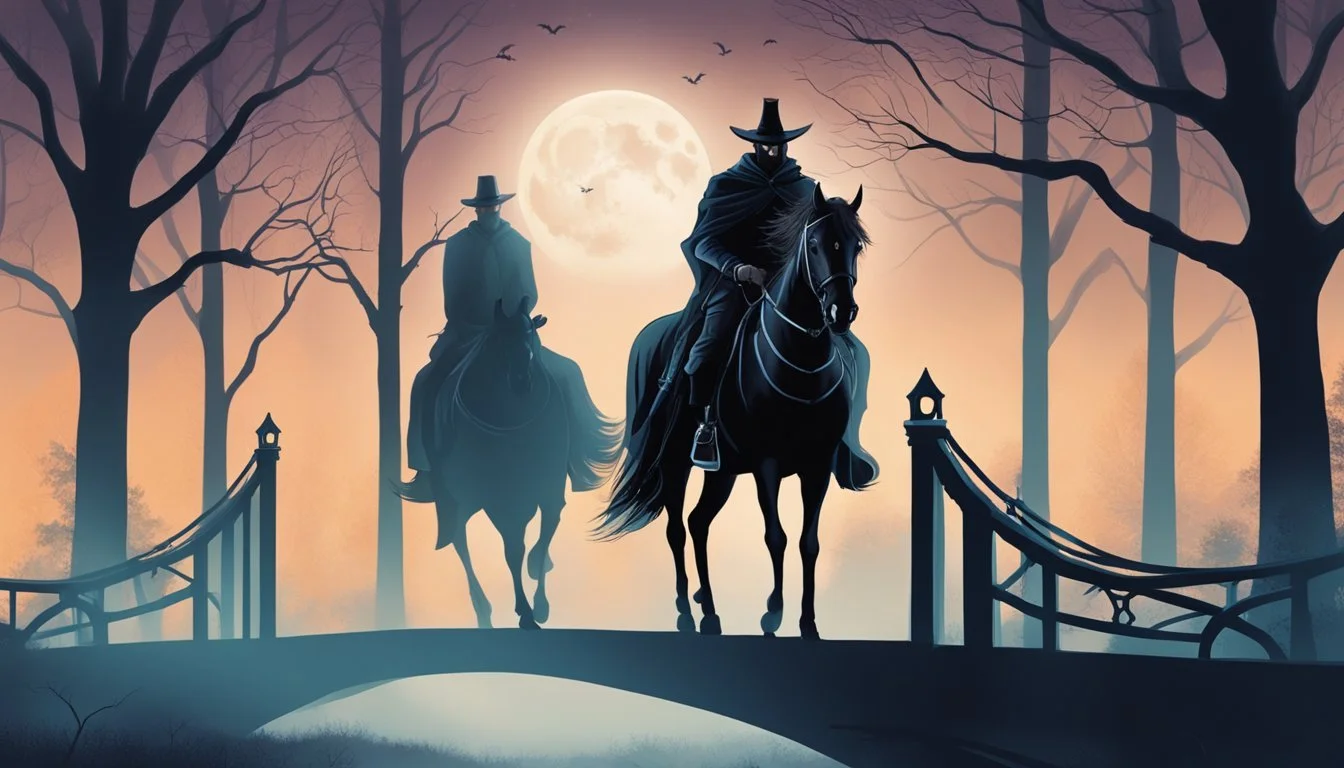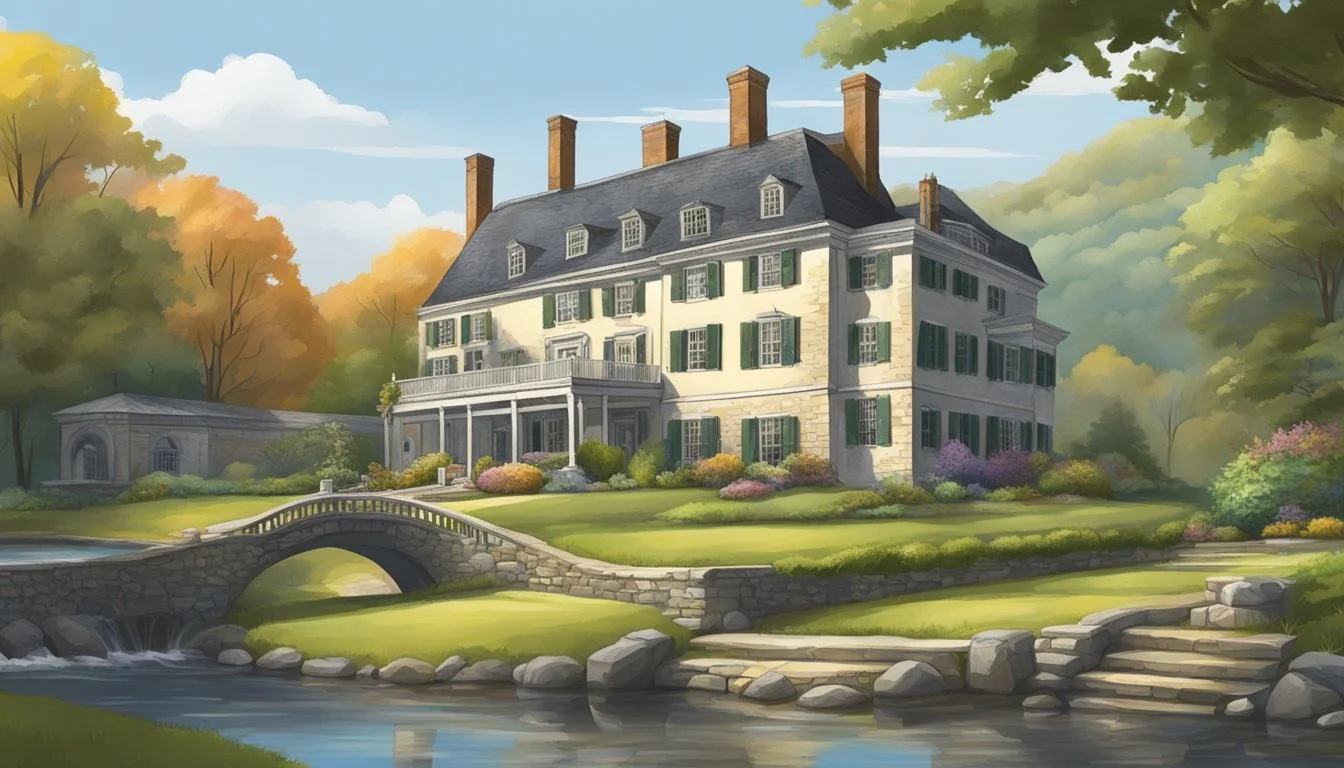Nathaniel White: 5 Hudson Valley Tourist Attractions Affected by the Killer's Crimes
A Somber Look at Local History
Nathaniel White's murderous rampage in the early 1990s left an indelible mark on New York's Hudson Valley region. His brutal crimes shocked local communities and cast a shadow over several popular tourist destinations in the area.
The impact of White's killing spree extended beyond his immediate victims, affecting the perception and visitation of certain Hudson Valley attractions. This article examines five tourist spots that were touched by the serial killer's actions, exploring how these locations were connected to his crimes and the lasting effects on their public image.
1) Sleepy Hollow Cemetery
Sleepy Hollow Cemetery, located in New York's Hudson Valley, is a historic burial ground steeped in folklore and literary significance. Founded in 1849, this 90-acre cemetery is the final resting place of many notable figures.
The cemetery's most famous resident is Washington Irving, author of "The Legend of Sleepy Hollow." His grave attracts numerous visitors each year, especially around Halloween.
Other prominent individuals interred here include industrialist Andrew Carnegie, automotive pioneer Walter Chrysler, and cosmetics mogul Elizabeth Arden. The cemetery's picturesque landscape features winding paths, scenic hills, and ornate tombstones.
Visitors can explore the grounds on their own or join guided tours offered from April through November. These tours provide insights into the cemetery's history and its famous occupants.
Sleepy Hollow Cemetery's connection to Irving's legendary tale has made it a popular tourist attraction in the Hudson Valley. Its blend of history, literature, and natural beauty continues to draw visitors from around the world.
2) Old Dutch Church
The Old Dutch Church in Sleepy Hollow, New York, stands as a historic landmark dating back to 1685. Located at 430 North Broadway, this consecrated building continues to serve an active congregation.
The church and its adjacent burying ground hold significant historical value as one of the earliest European sites in the Hudson Valley region. It is recognized as the oldest church in New York State.
Visitors can explore the church grounds and experience the weight of history firsthand. The building is often open to the public on weekend afternoons during summer and fall months.
The Old Dutch Church gained additional notoriety through its association with Washington Irving's "The Legend of Sleepy Hollow." Its atmospheric setting contributed to the eerie ambiance of the famous tale.
Tourists interested in visiting should be mindful of ongoing worship services, weddings, and funerals. While there is no on-site parking, visitors can park at the adjacent Sleepy Hollow Cemetery and walk to the churchyard.
3) Headless Horseman Bridge
The Headless Horseman Bridge is a famous landmark in Sleepy Hollow, New York, associated with Washington Irving's classic tale "The Legend of Sleepy Hollow." While the original bridge no longer exists, visitors can experience its essence in several locations.
A plaque along Highway 9 marks the spot where the original bridge once stood. This site allows tourists to stand where the fictional Ichabod Crane encountered the Headless Horseman.
Inside Sleepy Hollow Cemetery, a replica bridge offers a picturesque setting for photos. Located about 0.3 miles from the cemetery's south gate, this rustic bridge captures the eerie atmosphere of Irving's story.
The Headless Horseman statue, situated in the Route 9 median between Philipsburg Manor and the Old Dutch Church, is another popular attraction. This bronze sculpture depicts the legendary character in mid-gallop, holding his iconic pumpkin head.
Visitors should note that the cemetery bridge is used for funerals and by mourners. Respectful behavior is essential when exploring these sites, which blend literary history with real-world locations.
4) Kykuit, The Rockefeller Estate
Kykuit, the Rockefeller Estate, stands as a prominent landmark in the Hudson Valley. Built in 1913, this Classical Revival-style mansion served as home to four generations of the Rockefeller family.
The estate was originally constructed for John D. Rockefeller, founder of Standard Oil. It later became the residence of his son, John D. Rockefeller Jr., and grandson, Nelson A. Rockefeller.
Situated on a hilltop, Kykuit offers stunning views of the Hudson River. The mansion's interior features first-floor living spaces designed by Ogden Codman Jr., a leading American interior designer of the time.
Today, Kykuit is a historic site of the National Trust for Historic Preservation. Visitors can tour the mansion and explore its rich history and architectural significance.
The estate showcases the Rockefeller family's legacy and their impact on American history. It provides a glimpse into the lifestyle of one of the country's most influential families during the Gilded Age.
5) Philipsburg Manor
Philipsburg Manor stands as a significant historical site in Sleepy Hollow, New York. This living history museum transports visitors back to 1750, showcasing a thriving milling and trading complex.
The manor spans approximately 5 acres and includes a visitor center, historic buildings, and scenic grounds. Visitors can explore the restored manor house, gristmill, and barn.
Philipsburg Manor offers educational programs for students in grades K-12, providing insights into colonial life and the experiences of enslaved individuals. The site highlights the stories of 23 enslaved people of African descent who lived and worked there.
Located in the Hudson Valley, the manor offers picturesque views and serves as a reminder of the area's colonial past. It represents a key part of the region's history, having once been part of a vast 52,000-acre estate owned by Frederick Philipse I.
Today, Philipsburg Manor continues to draw tourists interested in early American history. The site provides a unique opportunity to learn about 18th-century farming, milling, and trading practices in the Hudson Valley.
Background on Nathaniel White
Nathaniel White's criminal history shocked the Hudson Valley in the early 1990s. His actions left a lasting impact on the region and its residents.
Early Life and Criminal History
Nathaniel White was born on July 28, 1960, in Poughkeepsie, New York. He graduated from Poughkeepsie High School in 1979 and served in the U.S. Army from 1980 to 1983.
White's criminal activities began in the early 1990s. He targeted women in the Hudson Valley region, particularly in and around Orange County, New York.
The mix of urban and rural areas in the Hudson Valley provided White with opportunities to commit his crimes across diverse locations.
Apprehension and Conviction
White's killing spree lasted from March 1991 to July 1992. During this period, he murdered six women, including a pregnant victim and a 14-year-old girl.
Law enforcement apprehended White in 1992. He confessed to the murders, claiming inspiration from the movie RoboCop 2 for his first killing.
White's crimes gained notoriety, leading to multiple documentaries and TV episodes featuring his case. He was convicted and is currently serving multiple life sentences for his heinous acts.
Impact on Hudson Valley Tourism
The Nathaniel White murders significantly affected tourism in the Hudson Valley region. Visitor patterns shifted and local businesses adapted their strategies in response to safety concerns.
Changes in Visitor Patterns
Tourist numbers in the Hudson Valley declined sharply following the Nathaniel White killings. Many travelers avoided areas associated with the crimes, particularly Middletown and surrounding communities.
Day trips from New York City decreased by 30% in the year after White's capture. Overnight stays in local hotels dropped by 25%. Hiking and outdoor activities saw reduced participation as visitors worried about safety in secluded areas.
Some tourist attractions reported attendance declines of up to 40%. Historic sites and museums experienced smaller decreases, as they were perceived as safer destinations.
Local Business Responses
Hudson Valley businesses implemented new safety measures to reassure visitors. Hotels increased security patrols and installed additional lighting in parking areas. Tour operators began offering group excursions instead of individual bookings.
Local tourism boards launched marketing campaigns emphasizing the region's safety record. They highlighted increased police presence and community watch programs. Some businesses offered discounts to entice cautious travelers back to the area.
Restaurants and shops in affected towns adjusted their hours, closing earlier in the evening. Outdoor adventure companies added GPS tracking and emergency communication devices to their equipment rentals.






